How to make nectarine baby food
Nectarines for Babies - First Foods for Baby
When can babies eat nectarines?
Nectarines, if ripe and soft, may be introduced as soon as baby is ready to start solids, which is generally around 6 months of age.
What is the difference between a nectarine and a peach?
Nectarines and peaches share nearly all of the same genetic make-up, with one exception. While peaches grow a fuzzy skin, the skin of a nectarine is smooth and glossy. Sometimes a nectarine will even grow on a tree full of peaches, and vice versa. Both peach and nectarine were first cultivated in East Asia thousands of years ago. There are lots of varieties of nectarine and peaches to try, each with their own shades of blushed or golden skin and flesh that ranges from white to pale yellow to pink. And just like peaches, nectarines vary in taste, too; some are tart, others are tangy, and many are sweet.
Are nectarines healthy for babies?
Yes. Nectarines offer fiber to help baby’s gut microbiome flourish, plus they contain good amounts of vitamin E, as well as vitamin A and vitamin C to promote immune health. Nectarine skin is particularly high in antioxidants—beneficial compounds that combat bodily stress and keep us healthy.1
★Tip: Wash the fruit before serving to baby to reduce pesticide residues and unfriendly germs.2
Can babies drink nectarine juice?
No. Juice of any kind should not be given to babies under 12 months of age, unless directed to do so by a health provider in very specific circumstances. It is best to wait to serve any kind of juice until age two, and even then, to limit the amount offered to minimize sugar (including natural sugar) in a child’s diet. Small amounts of juice (less than 4 oz a day, ideally diluted with water to reduce sweetness) may be safely offered after a child’s first birthday, but there are many benefits to waiting.3 Regular and excessive consumption of sweet beverages may reduce the diversity of foods and nutrients consumed and may increase the risk of diabetes, heart disease, and dental caries.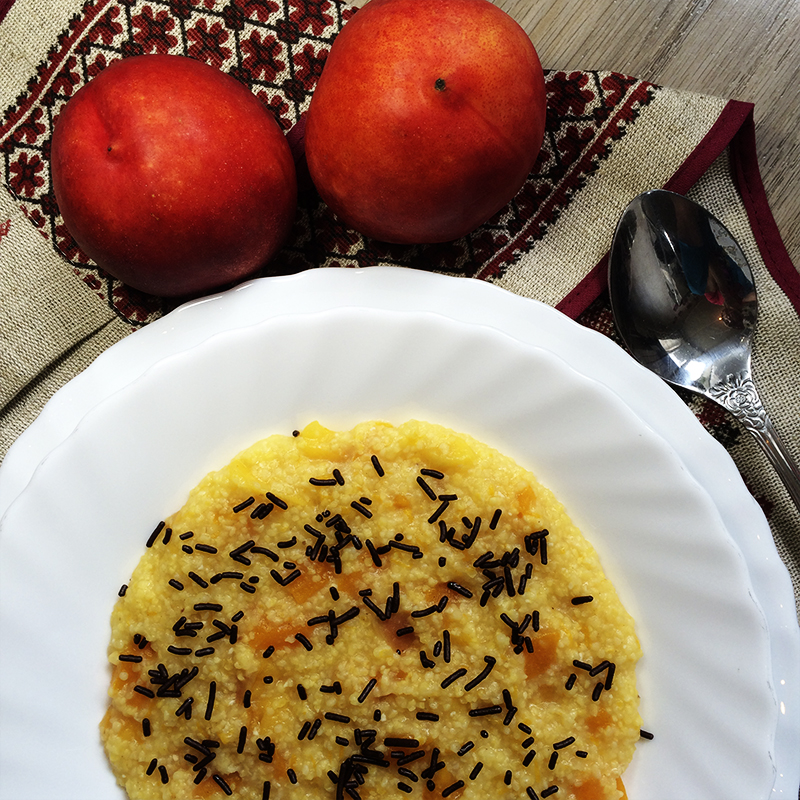 4 Plus, fruits in their whole form are more nutritious than the juice.5
4 Plus, fruits in their whole form are more nutritious than the juice.5
Do nectarines help babies poop?
Yes. Nectarines are rich in fiber and fluid that help feed healthy gut bacteria, bulk up poop, and hydrate the intestines to support healthy digestion and bowel movements. In particular, nectarines (along with pears, prunes, plums, and others) have sorbitol, a type of carbohydrate that adds sweetness and promotes bowel movements.6
Certain high-fiber and sorbitol-containing foods can produce gas and, at times, diaper blowouts; while this is normal and expected, it can be uncomfortable for baby. To minimize digestive discomfort, introduce high-fiber foods like nectarines gradually and regularly in baby’s diet as tolerated.7 Remember that pooping patterns can vary significantly from day to day and baby to baby. If you have concerns about your baby’s pooping and digestive function, talk to your pediatric healthcare provider.
Are nectarines a common choking hazard for babies?
They can be, especially when underripe.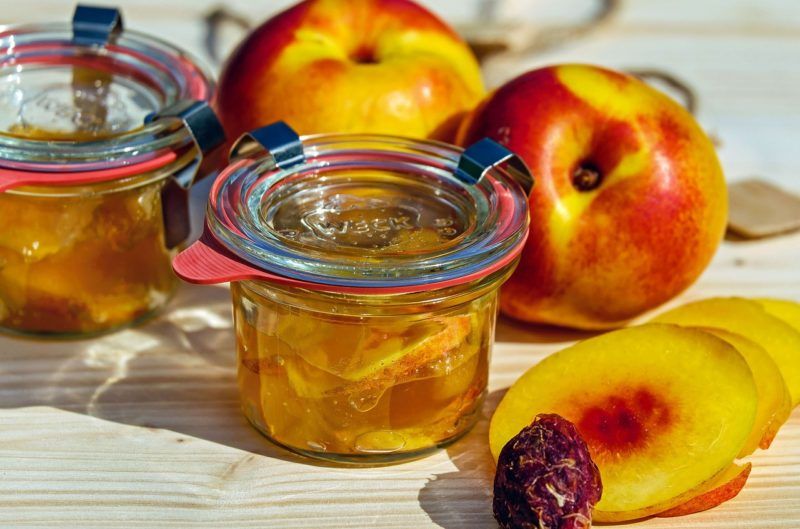 Nectarines are slippery and can be firm, qualities that can increase the risk of choking. To reduce the risk, only serve very ripe, soft nectarines. Note that the skin, while not a common choking hazard, can stick to the roof of the mouth or baby’s tongue and cause some gagging or discomfort. As always, make sure you create a safe eating environment and stay within an arm’s reach of baby during meals. For more information on choking, visit our sections on gagging and choking and familiarize yourself with the list of common choking hazards.
Nectarines are slippery and can be firm, qualities that can increase the risk of choking. To reduce the risk, only serve very ripe, soft nectarines. Note that the skin, while not a common choking hazard, can stick to the roof of the mouth or baby’s tongue and cause some gagging or discomfort. As always, make sure you create a safe eating environment and stay within an arm’s reach of baby during meals. For more information on choking, visit our sections on gagging and choking and familiarize yourself with the list of common choking hazards.
Are nectarines a common allergen?
No. Allergies to nectarines are uncommon. Individuals with Oral Allergy Syndrome (also known as pollen-food allergy syndrome), and particularly those with sensitivities to birch tree and/or certain grass pollens, may be sensitive to nectarines.8 9 Individuals sensitive to other foods of the Rosaceae family, such as apricots, almonds, peaches, and plums may also have a similar experience with nectarines. 10 11 Oral Allergy Syndrome typically results in short-lived itching, tingling, or burning in the mouth and is unlikely to result in a dangerous reaction. Cooking, canning, or peeling nectarines can help minimize and even eliminate the reaction.12 13
10 11 Oral Allergy Syndrome typically results in short-lived itching, tingling, or burning in the mouth and is unlikely to result in a dangerous reaction. Cooking, canning, or peeling nectarines can help minimize and even eliminate the reaction.12 13
As you would when introducing any new food, start by offering a small quantity on its own for the first few servings. If there is no adverse reaction, gradually increase the quantity over future meals.
How do you prepare nectarines for babies with baby-led weaning?
Every baby develops on their own timeline, and the suggestions on how to cut or prepare particular foods are generalizations for a broad audience. Your child is an individual and may have needs or considerations beyond generally accepted practices. In determining the recommendations for size and shape of foods, we use the best available scientific information regarding gross, fine, and oral motor development to minimize choking risk. The preparation suggestions we offer are for informational purposes only and are not a substitute for child-specific, one-on-one advice from your pediatric medical or health professional or provider. It is impossible to fully eliminate all risk of a baby or child choking on any liquid, puree, or food. We advise you to follow all safety protocols we suggest to create a safe eating environment and to make educated choices for your child regarding their specific needs. Never disregard professional medical advice or delay in seeking it because of something you have read or seen here.
The preparation suggestions we offer are for informational purposes only and are not a substitute for child-specific, one-on-one advice from your pediatric medical or health professional or provider. It is impossible to fully eliminate all risk of a baby or child choking on any liquid, puree, or food. We advise you to follow all safety protocols we suggest to create a safe eating environment and to make educated choices for your child regarding their specific needs. Never disregard professional medical advice or delay in seeking it because of something you have read or seen here.
6 to 9 months old: Serve pitted nectarines cut in half with the skin on. Leaving skin on the nectarine helps baby grip the slippery fruit, and at this age, babies often suck and scrape the flesh and spit out any skin that gets in the mouth. If the skin makes you nervous, peel it and roll the nectarine half in shredded coconut or finely ground-up nuts or seeds to add grip and reduce slipperiness. If baby bites off a too-large piece of nectarine or nectarine skin, take a deep breath and refrain from sticking your fingers in baby’s mouth. Instead, kneel down next to baby so they look down at you, allowing gravity to help the piece of food come forward, and place your hand under their chin to encourage spitting. If you are uncomfortable serving a nectarine half, simply mash the flesh and mix it into a soft, easy-to-scoop food like porridge or yogurt.
If baby bites off a too-large piece of nectarine or nectarine skin, take a deep breath and refrain from sticking your fingers in baby’s mouth. Instead, kneel down next to baby so they look down at you, allowing gravity to help the piece of food come forward, and place your hand under their chin to encourage spitting. If you are uncomfortable serving a nectarine half, simply mash the flesh and mix it into a soft, easy-to-scoop food like porridge or yogurt.
9 to 12 months old: Offer thin slices of soft, ripe nectarine with skin on or off. If baby is not ready to pick up slices of nectarine, continue offering pitted nectarine halves with the skin on or peeled. Because nectarines are so slippery, bite-sized pieces can be too challenging for baby to pick up, so be wary of going too small in size as you cut up the fruit.
12 to 18 months old: Continue with thinly sliced nectarine or keep serving halved soft, ripe nectarines for biting practice. Alternatively, cut nectarine into bite-sized pieces to pre-load on a fork.
18 months old and up: If you feel comfortable, consider offering your toddler a whole, ripe nectarine. We recommend you eat one at the same time to demonstrate biting into the nectarine and how to avoid the pit. Take a few bites and then show your toddler the hard pit on the inside. Tap it with your finger and tell them, “I am eating around this hard part.” If your toddler puts the whole pit in their mouth, try not to panic. Kneel next to your toddler and tell them: “Spit that out please. Pits are not for eating.” Put your hand under their chin while you demonstrate spitting. If needed, put a pit in your own mouth, show it on your tongue, and demonstrate spitting it into your own hand.
Our Nutrient Cheat Sheet is a handy one-page reference of the nutrients babies need most.
Recipe: Nectarine Two Ways
Yield: 1 nectarine half + ¾ c (180 ml) nectarine yogurt
Cook Time: 5 minutes
Age: 6 months+
Ingredients
- 2 ripe nectarines
- ½ c (120 ml) plain yogurt
- ¼ c (60 ml) unsalted pecans
This recipe contains common allergens: dairy (yogurt) and tree nut (pecan). Only serve to a child after these allergens have been safely introduced. Always check for potential allergens in ingredients listed on the labels of store-bought processed foods, such as yogurt. Added ingredients may include honey, which should not be given to babies younger than 12 months.
Only serve to a child after these allergens have been safely introduced. Always check for potential allergens in ingredients listed on the labels of store-bought processed foods, such as yogurt. Added ingredients may include honey, which should not be given to babies younger than 12 months.
Directions
- Wash the nectarines, then halve the fruits. Twist the halves in opposite directions to separate them from the pits. If fruit clings to the pits, simply cut the fruit halves away from the pit. Keep the skin on or peel it if you prefer.
- Chop two nectarine halves, then mash the fruit. Swirl the mashed fruit in yogurt.
- Grind the pecans into a fine powder, then sprinkle a pinch on top of the yogurt. If pecans are not available, use any tree nut that has been safely introduced or sunflower seeds.
- Roll the other nectarine halves in the rest of the pecan powder.
Serve the Nectarine
- Offer a nectarine half and nectarine yogurt to baby, then let the child self-feed.

- If help is needed, hold a nectarine half or a pre-loaded spoon of yogurt in the air in front of baby, then let the child grab it from you.
- Eat a nectarine half alongside the child to model how it’s done.
To Store: Cut nectarine keeps in an airtight container in the refrigerator for 3 days or in the freezer for 2 months.
Flavor Pairings
Nectarines pair beautifully with arugula, blackberries, cherries, mascarpone cheese, ricotta cheese, and yogurt.
Reviewed by
V. Kalami, MNSP, RD, CSP. Board-Certified Pediatric Dietitian and Nutritionist
K. Tatiana Maldonado, MS, CCC-SLP, CBIS, CLEC. Pediatric Feeding Therapist
K. Rappaport, MS, OTR/L, SCFES, IBCLC, Pediatric Feeding Therapist
K. Grenawitzke, OTD, OTR/L, SCFES, IBCLC, CNT. Pediatric Feeding Therapist
Dr. S. Bajowala, MD, FAAAAI. Board-Certified Allergist & Immunologist (allergy section)
Dr.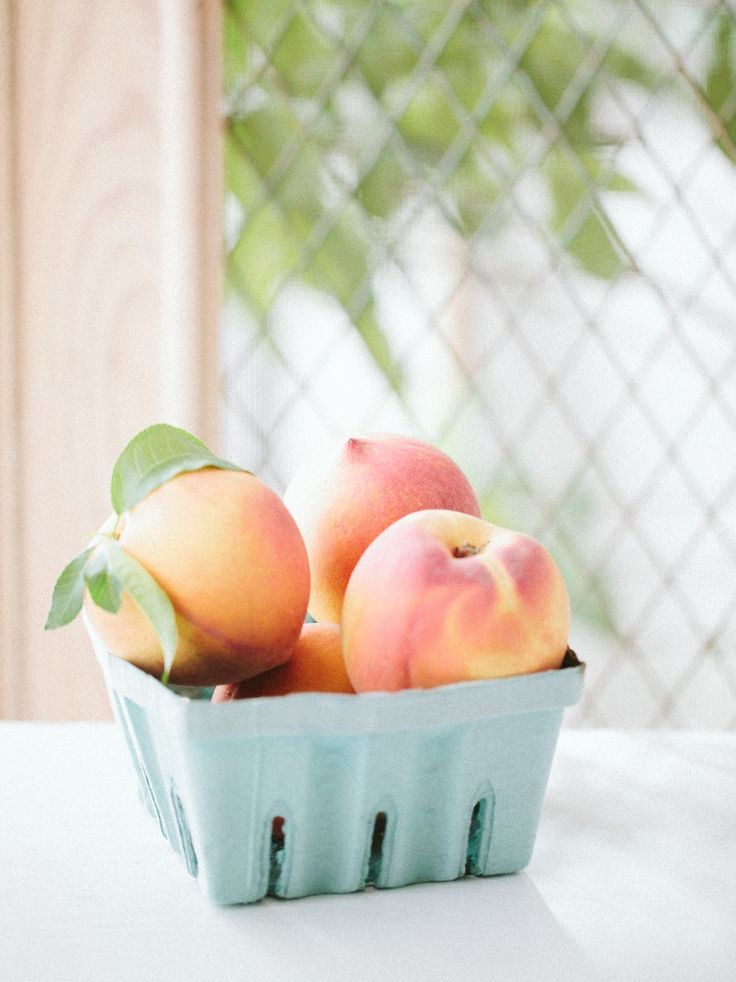 R. Ruiz, MD, FAAP. Board-Certified General Pediatrician & Pediatric Gastroenterologist
R. Ruiz, MD, FAAP. Board-Certified General Pediatrician & Pediatric Gastroenterologist
- Leontowicz, H., Gorinstein, S., Lojek, A., Leontowicz, M., Ci;z, M., Soliva-Fortuny, R., Park, Y. S., Jung, S. T., Trakhtenberg, S., & Martin-Belloso, O. (2002). Comparative content of some bioactive compounds in apples, peaches and pears and their influence on lipids and antioxidant capacity in rats. The Journal of nutritional biochemistry, 13(10), 603–610. DOI: 10.1016/s0955-2863(02)00206-1. Retrieved August 30, 2022
- U. S. Department of Agriculture. USDA Office of Pest Management Policy Factsheet Pesticide Residues on Fruits and Vegetables. Retrieved August 30, 2022
- American Academy of Pediatrics. (2022). Where we stand: Fruit juice for children. Retrieved August 30, 2022
- Fidler Mis, N., Braegger, C., Bronsky, J., Campoy, C., Domellöf, M., Embleton, N. D., Hojsak, I., Hulst, J., Indrio, F., Lapillonne, A., Mihatsch, W., Molgaard, C., Vora, R.
 , Fewtrell, M., & ESPGHAN Committee on Nutrition: (2017). Sugar in Infants, Children and Adolescents: A Position Paper of the European Society for Paediatric Gastroenterology, Hepatology and Nutrition Committee on Nutrition. Journal of pediatric gastroenterology and nutrition, 65(6), 681–696. DOI: 10.1097/MPG.0000000000001733. Retrieved August 30, 2022
, Fewtrell, M., & ESPGHAN Committee on Nutrition: (2017). Sugar in Infants, Children and Adolescents: A Position Paper of the European Society for Paediatric Gastroenterology, Hepatology and Nutrition Committee on Nutrition. Journal of pediatric gastroenterology and nutrition, 65(6), 681–696. DOI: 10.1097/MPG.0000000000001733. Retrieved August 30, 2022 - Crowe, K. M., Murray, E. (2013). Deconstructing a fruit serving: Comparing the antioxidant density of select whole fruit and 100% fruit juices. Journal of the Academy of Nutrition and Dietetics 113 (10), 1354-1358. DOI: 10.1016/j.jand.2013.04.024. Retrieved August 30, 2022
- Rao, S., & Brenner, D. M. (2021). Efficacy and Safety of Over-the-Counter Therapies for Chronic Constipation: An Updated Systematic Review. The American journal of gastroenterology, 116(6), 1156–1181. DOI: 10.14309/ajg.0000000000001222. Retrieved August 30, 2022
- Quagliani, D., & Felt-Gunderson, P. (2016). Closing America’s Fiber Intake Gap: Communication Strategies From a Food and Fiber Summit.
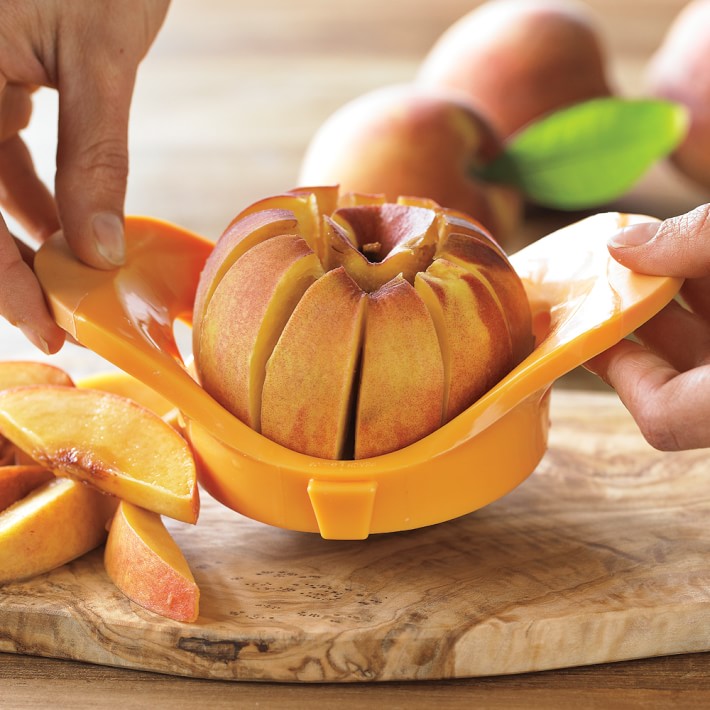 American journal of lifestyle medicine, 11(1), 80–85. DOI: 10.1177/1559827615588079. Retrieved August 30, 2022
American journal of lifestyle medicine, 11(1), 80–85. DOI: 10.1177/1559827615588079. Retrieved August 30, 2022 - American Academy of Allergy Asthma & Immunology. Oral Allergy Syndrome (OAS) or Pollen Fruit Syndrome (PFS). Retrieved August 30, 2022
- Kim JH, Kim SH, Park HW, Cho SH, Chang YS. (2018). Oral Allergy Syndrome in Birch Pollen-Sensitized Patients from a Korean University Hospital. J Korean Med Sci. 33(33):e218. DOI: 10.3346/jkms.2018.33.e218. Retrieved August 30, 2022
- Rodriguez, J., Crespo, J. F., Lopez-Rubio, A., De La Cruz-Bertolo, J., Ferrando-Vivas, P., Vives, R., & Daroca, P. (2000). Clinical cross-reactivity among foods of the Rosaceae family. The Journal of allergy and clinical immunology, 106(1 Pt 1), 183–189. DOI: 10.1067/mai.2000.106927. Retrieved August 30, 2022
- Costa, J., & Mafra, I. (2022). Rosaceae food allergy: a review. Critical reviews in food science and nutrition, 1–38. Advance online publication. DOI: 10.1080/10408398.
 2022.2045897. Retrieved August 30, 2022
2022.2045897. Retrieved August 30, 2022 - American Academy of Allergy, Asthma, and Immunology. (2020). Oral allergy syndrome. Retrieved August 30, 2022
- Kashyap, R. R., & Kashyap, R. S. (2015). Oral Allergy Syndrome: An Update for Stomatologists. Journal of allergy, 2015, 543928. DOI: 10.1155/2015/543928. Retrieved August 30, 2022
Peaches and Nectarines for Baby Food
Peaches & Nectarines in Baby Food Recipes
Image: Shutterstock
Did you know that the only difference between peaches and nectarines is the lack of fuzz on the nectarine skin. Nectarines tend to be smaller and more aromatic than peaches and have more red color on the fruit surface. (U.R.I. Horticultural School)
The Goodness of Peaches & Nectarines for Your Baby
Peaches are high in Vitamin C and Vitamin A and they contain a great amount of fiber. Peaches are known to have a diuretic affect and also are a natural laxative. Along with Prunes/Plums, the Peach is a great fruit to give to your baby if constipation has become a problem.
When can my baby have Peaches in baby food recipes?
Many pediatricians recommend that babies may begin to eat Peaches anywhere from 4 to 6 (six) months old. For those that start their babies on solid foods earlier than the recommended 6 months of age, peaches are an easy to digest first food for those between 4-6 months of age. Peaches are yummy, sweet and juicy. They pair well with a lot of other foods for baby such as chicken and bananas and avocado. Peaches may be poached, steamed or baked. Please be aware that Peaches tend to loose their nutritive value with prolonged cooking. Baking peaches or using a microwave to steam them may be the best choice of cooking for optimal nutrient retention. Peaches may be fed to your baby in pureed form alone or mixed into cereals, yogurts, and even in meats such as chicken. Frozen peach slices stuffed into a baby safe feeder are GREAT to help alleviate teething pain. Ripe peaches, or gently cooked peaches, may be diced into small cubes and fed to your baby as a Baby Finger Foods. If you find the dices are too slippery for baby to pick up, coat the dices with crushed and powdered Cheerios or with Wheat Germ. As always, we recommend that you consult with your pediatrician about introducing solid foods to your baby; generalities may not apply to all babies.
If you find the dices are too slippery for baby to pick up, coat the dices with crushed and powdered Cheerios or with Wheat Germ. As always, we recommend that you consult with your pediatrician about introducing solid foods to your baby; generalities may not apply to all babies.
Nutrients in 1 medium sized peach – with skin
| VITAMINS:Vitamin A – 524 IUVitamin C – 19 mg Folate (important during pregnancy) – 5.5 mcg Niacin – .97 mg | MINERALS:Potassium – 193 mgPhosphorus – 12 mg Magnesium – 6.9 mg Calcium – 5 mg Selenium – .4 mg Also contains trace amounts of iron, zinc, manganese and copper. |
How to select and store Peaches and Nectarines for Baby Food
According to the EWG, peaches (nectarines too) are one of the “dirty dozen” foods that are most highly contaminated with pesticides – purchasing organic is a smart choice. Once picked, a Peach or a Nectarine will not get any more sweet or ripe. A Peach or a Nectarine will however become softer and will also become more juicy. When selecting these fruits, you want to ensure that there are no cuts or bruising on the fruit. Purchase peaches and nectarines that are firm yet slightly yielding when gently pressed.
Once picked, a Peach or a Nectarine will not get any more sweet or ripe. A Peach or a Nectarine will however become softer and will also become more juicy. When selecting these fruits, you want to ensure that there are no cuts or bruising on the fruit. Purchase peaches and nectarines that are firm yet slightly yielding when gently pressed.
How to peel a Peach to Prepare for Baby Food
Step 1: Scrub fruit clean and carve an X into 1 side of the fruit Step 2: Place X side down in a pan with an inch of water Step 3: Bring water to a boil and steam until soft and tender Step 4: Allow the fruit to cool and then peel the skin from fruit – the skin should slip off very easily.
Tasty & Simple Peach Baby Food Recipes
Pureed Peaches for Baby
Steam or Bake or Blanch Peaches for Making Baby’s Peach Puree
These methods work for nectarines, plums and pears as well. I HIGHLY recommend giving baked peaches a try at least once. You will find they are more tasty when baked. Why not try baking for all fruits?
I HIGHLY recommend giving baked peaches a try at least once. You will find they are more tasty when baked. Why not try baking for all fruits?
Steam Peaches – Method 1
Step 1: Scrub fruit clean and carve an X into 1 side of the fruit
Step 2: Place X side down in a pan with an inch of water
Step 3: Bring water to a boil and steam until soft and tender
Step 4: Peel skin from fruit and remove pits and/or seeds
Step 5: move to step #6 below
Steam Peaches – Method 2
Step 1: Peel fruit
Step 2: Pit the peach
Step 3: Cut the peach into dices
Step 4: Steam until soft and tender then
Step 5: move to step #6
Bake
Step 1: Halve the fruit, pit and place “open” side down in a pan filled with 1 inch of water
Step 2: Bake at 400F until soft and tender and/or puckering of the skin appears.
Step 3: Peel skin from fruit and remove pits if you did not do so prior to baking (you may also leave the skin on your baked peaches – the skin may simply melt into the fruit.)
Step 4: move to step #6
“Blanch”
Step 1: Bring 3 or 4 cups of water to a rolling boil
Step 2: Add cleansed peaches or nectarines to the boiling water and boil the fruit for 3-5 minutes
Step 3: Remove fruit to a bowl of cold water, allow to cool for 2 minutes
Step 4: Slip off the skins and then take out the pit
Step 5: move to step #6
Moving to Step 6
Step 6: Reserve any left over water to use for thinning out the fruits
Step 7: Peel off skin if you have not done this already. Place fruit(s) into your choice of appliance for pureeing and begin pureeing.
Step 8: Add the reserved water as necessary to achieve a smooth, thin puree
Step 9: Add cereal (if desired) to thicken up.
Peeling Fruits & Veggies – It is suggested that fruits and veggies be peeled for those babies under 8 months of age. This allows for easier digestion. If you have always left peels on, then there should be no need to begin peeling. Read more about Peeling Fruits & Veggies
Peach Baby Food Recipes – Peaches & Tapioca
without yogurt with Yogurt
- ½ Cup Water
- 1/3 Cup Quick-cooking Tapioca
- 1 Peeled & pitted Peach
- ½ Cup Vanilla Yogurt
Bring water to a boil in a saucepan. Gradually add tapioca, stirring constantly. Reduce heat to low & cook 5 minutes, continuing to stir constantly. Separately puree the peach & add to the mixture. Blend tapioca with yogurt & peach.
Peachy Bananas
- 1 peeled & pitted Peach
- 1/2 ripe banana – peeled
Steam peach if needed and then mash it. Mash the peeled banana into the peach. Puree if needed for your baby’s texture preferences.
Peaches a la Squash
- 2 peeled & pitted Peach
- 1/2 cup pureed acorn or butternut squash
Steam peaches if needed and puree or mash. Mix the pureed peaches into the squash and serve. This pairs nicely with chicken as well as stirred into rice or oatmeal cereal.
Peach Rice Pudding for Baby
- 2 cups 2% milk
- 1/2 cup honey (*leave out for babies under 1 yr. old)
- 2 eggs (use 4 yolks for those under 12 months.)
- 2 tsp vanilla
- 4 cups cooked short- or medium-grain brown rice
- 1/3 cup raisins
- 1 cup low-fat, peach-flavored yogurt (we prefer plain.)
- 1/2 tsp cinnamon
Preheat oven to 350 degrees F. In a large bowl, whisk together milk, honey, eggs, and vanilla. Add cooked rice and raisins and mix well. Pour mixture into a 2-quart casserole dish that has been sprayed with non-stick spray. Cover and bake for 40 minutes, stirring twice during cooking time. Remove pudding from oven and let cool.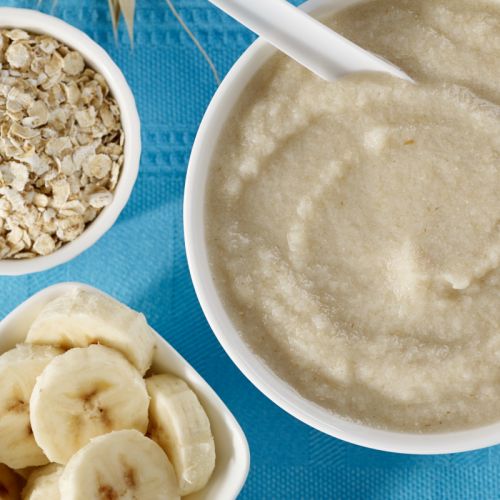 Stir in yogurt and cinnamon. Tastes great warm or cold. Store leftovers in refrigerator.
Stir in yogurt and cinnamon. Tastes great warm or cold. Store leftovers in refrigerator.
Foods Good to Mix With Peaches for Baby Food Meals
- Apples
- Avocado
- Bananas
- Blueberries
- Carrots
- Butternut or Acorn Squash
- Sweet Potato
- Chicken
- Pork
- Yogurt
Remember, always consult with your pediatrician regarding introducing solid foods to your baby and specifically discuss any foods that may pose allergy risks for your baby.
This site complies with the HONcode standard for trustworthy health information: verify here.
ORAL ALLERGY SYNDROME
The food on this page may be one involving OAS. OAS occurs when a person sensitive/allergic to pollen develops a reaction to fruits/veggies that have a similar type of pollen. Itching & swelling of the lips, the mouth and/or throat are typical symptoms. These symptoms normally appear within minutes of eating the offending food and may be worse during the spring and fall pollen seasons.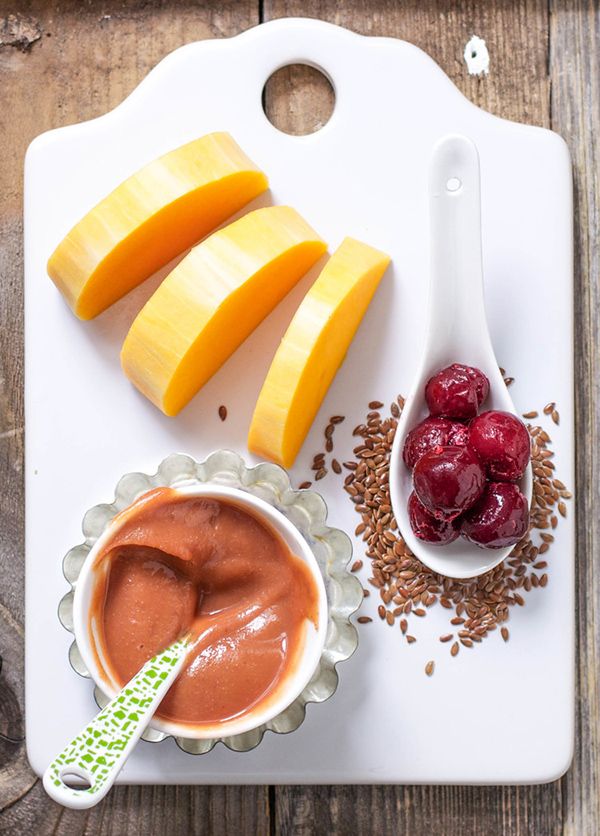 Rarely is an OAS life threatening. Click below to learn more.
Rarely is an OAS life threatening. Click below to learn more.
Birch Pollen Allergies
Birch pollen allergies are associated with apple, carrot, cherry, pear, peach, plum, fennel, walnut, potato, spinach, buckwheat, peanut, honey, celery, and kiwifruit.
Cedar Allergies
Japanese cedar allergies are associated with melon, apple, peach and kiwifruit.
Mugwort Allergies
Mugwort allergies are associated with celery, carrot, spices, melon, watermelon, apple, hazelnut, and chestnut.
Grass Pollen
Grass pollen allergies are associated with melon, tomato, watermelon, orange, rice and cherry.
Ragweed Pollen
Ragweed allergies are associated with melon, chamomile, honey, banana, and sunflower seeds.
Latex
Latex allergies may be cross-reactive to banana, avocado, kiwi and papaya.
Using frozen peaches is a great way to offer your baby “fresh”, in-season peaches all year long.

Take a few slices or dices out of the bag and then gently steam or simply thaw and mash/puree. You can refreeze steamed peaches if you wish but making a few servings at a time to store in the refrigerator is best.
Feeding Baby – Quick Links of Interest
- Baby Led Weaning – is Baby Led Weaning Right for Your Baby?
- Feeding Your 6-8 Month Old Baby
- Is Baby Ready for Solid Foods?
- How Much Food Should My Baby Eat?
- Constipation and Solid Foods
SHARE ON FACEBOOK SHARE ON PINTEREST
When can a child be given nectarine, from how many months?
› ›
